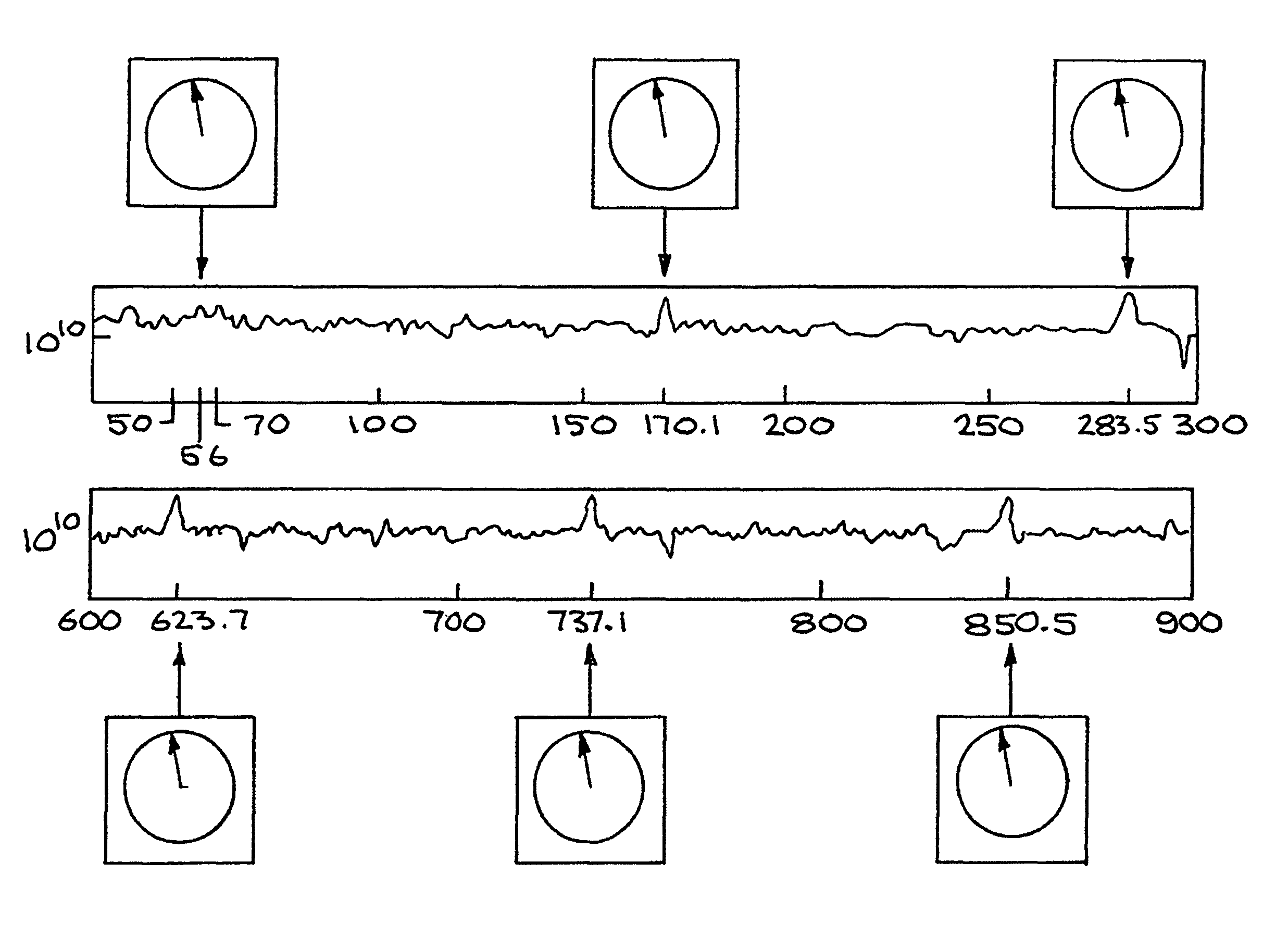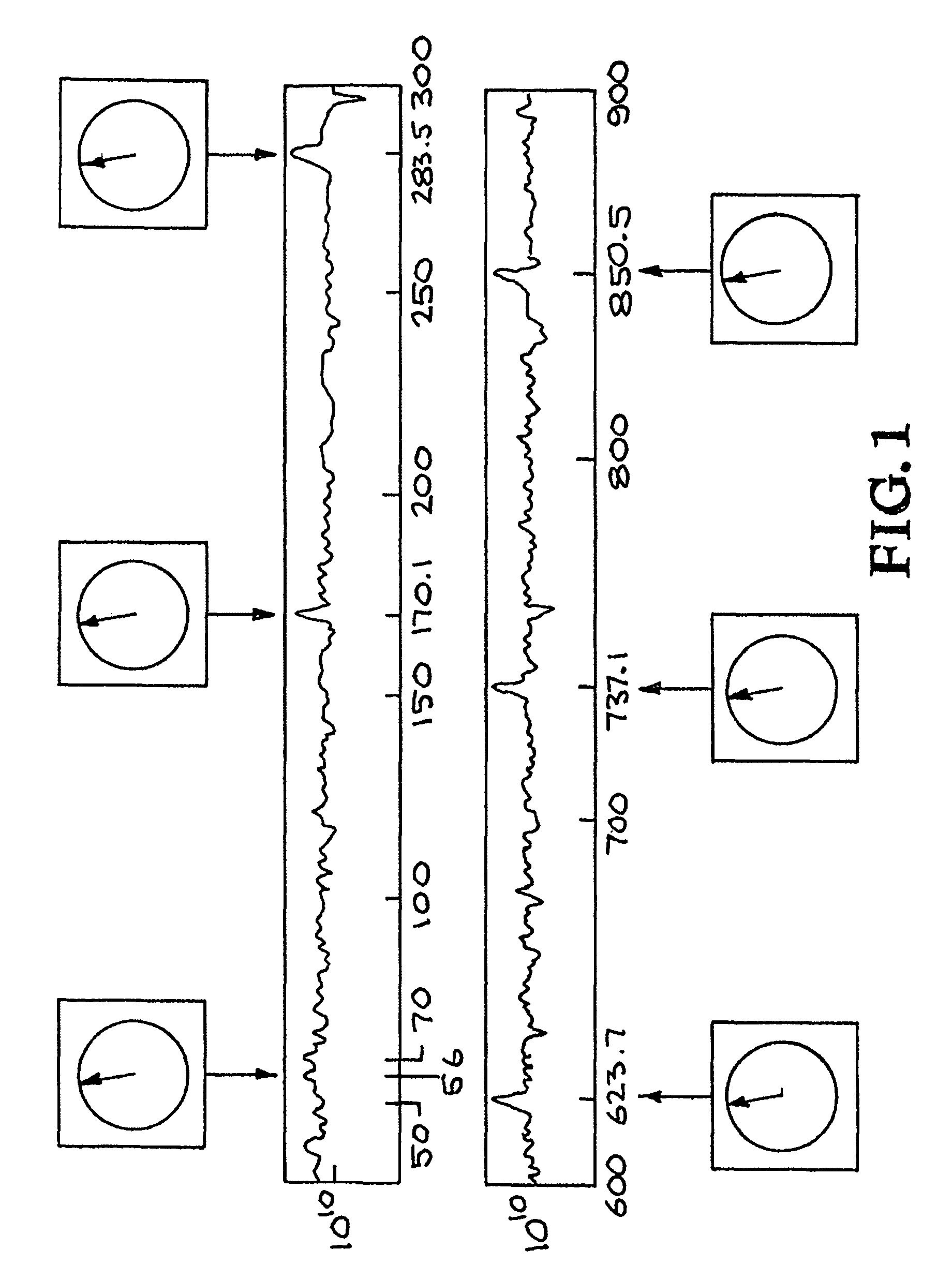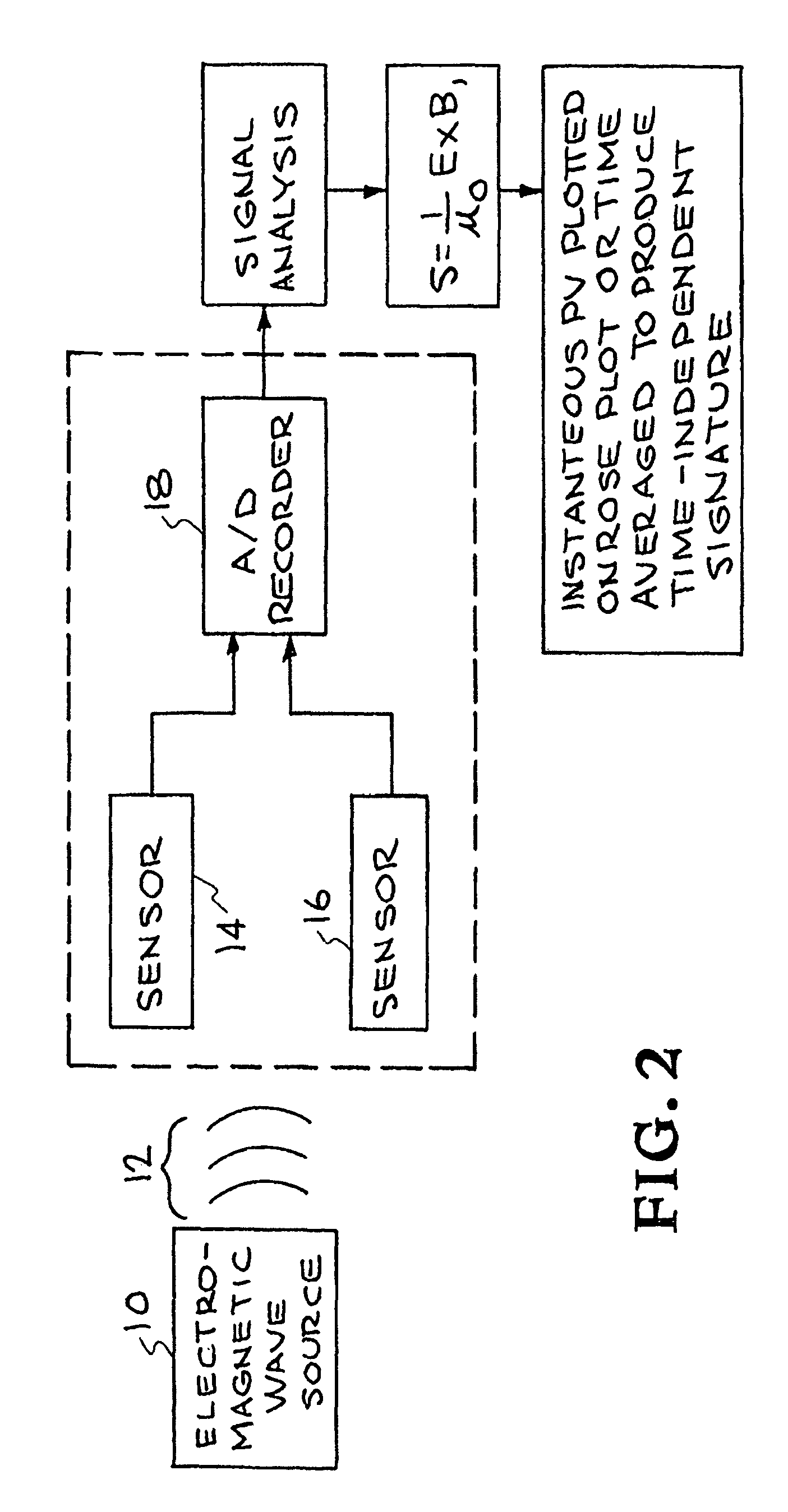Poynting-vector filter
a technology of a vector filter and a source of electromagnetic radiation, which is applied in the direction of digital variable/waveform display, instruments, measurement devices, etc., can solve the problems of buried signals, and it is difficult to pick out the contribution of a facility or electrical device/system (i.e., radiated signals) to a broadband data stream using just conventional filtering techniques
- Summary
- Abstract
- Description
- Claims
- Application Information
AI Technical Summary
Benefits of technology
Problems solved by technology
Method used
Image
Examples
Embodiment Construction
[0020]The invention is a method for providing the Poynting Vector “tag” for each harmonic or frequency component of a radiating electrical source / load system. This tag, which is unique to radiation from a particular location, corresponds to the bearing of a radiating electrical source / load system and is useful for facility / system monitoring and characterization purposes. For simplicity, the description given here involves a single set of sensors (one triaxial E and one triaxial B-field sensor) but can readily be extended to a network of sensors for detecting and tagging a variety of signal sources below and above the Earth's surface, in and on bodies of water as well as in the atmosphere and space.
[0021]FIG. 1 shows peaks in the power spectrum associated with harmonics of detected power / load system as well as virtually identical azimuthal Poynting vectors calculated for each harmonic. Poynting vectors calculated for other, unrelated peaks in the spectrum will be in different directi...
PUM
 Login to View More
Login to View More Abstract
Description
Claims
Application Information
 Login to View More
Login to View More - R&D
- Intellectual Property
- Life Sciences
- Materials
- Tech Scout
- Unparalleled Data Quality
- Higher Quality Content
- 60% Fewer Hallucinations
Browse by: Latest US Patents, China's latest patents, Technical Efficacy Thesaurus, Application Domain, Technology Topic, Popular Technical Reports.
© 2025 PatSnap. All rights reserved.Legal|Privacy policy|Modern Slavery Act Transparency Statement|Sitemap|About US| Contact US: help@patsnap.com



